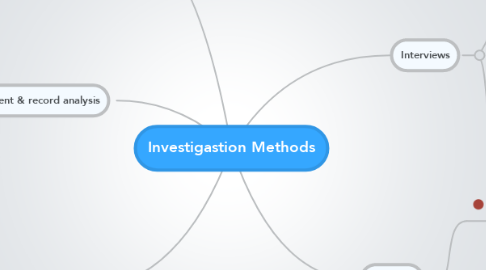
1. Questionnaires
1.1. Limitations
1.1.1. Must be designed carefully
1.1.2. Cannot guarantee 100% return
1.1.3. Difficult to gain realistic view the system
1.2. Benifits
1.2.1. Large numbers of people can be asked the same questions
1.2.1.1. Comparisons are easy to make
1.2.2. Cheaper than interviews for large numbers of people
1.2.3. Anonymity may provide more honest answers
1.2.4. Factual information is easy to collect
2. Interviews
2.1. Limitations
2.1.1. Can be time consuming and costly
2.1.2. Poor interviewing can lead to misleading data being gathered
2.1.3. It might be impossible to interview everyone in a large organisation
2.2. Benifits
2.2.1. A report can be developed with the people who use the system
2.2.2. Questions can be adjusted as the interview proceded
2.2.2.1. Questions can be altered to gain more info
3. Meetings
3.1. Limitations
3.1.1. The discussions can loose focus, resulting in questions not being fully answered
3.1.2. Some staff may not attend, jobs/tasks will still need completing
3.2. Benifits
3.2.1. A specific department can attend the meeting
3.2.2. Discussions can take place with different views being expressed
3.2.3. Can be used to gather or give information
3.2.4. Body language/reactions can be seen.
4. Document & record analysis
4.1. Limitations
4.1.1. Cannot be used when output information is not document based
4.2. Benifits
4.2.1. Good for obtaining factual information
5. Observation
5.1. Limitations
5.1.1. Can be time consuming and costly
5.1.2. Problems may not occur during observation
5.1.3. Users may not act naturally under observation
5.2. Benifits
5.2.1. The effects of office layouts and conditions on the system can be assessed
5.2.2. Workloads, methods or working, delays and bottlenecks can be identified
5.2.3. Potential to experience all aspects of the job role
